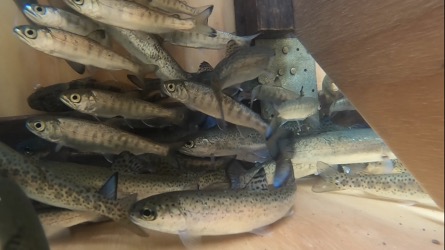Each spring, when the creeks and rivers begin to swell again, Steelhead and Coho parr (young salmon between the stages of fry and smolt) are preparing to migrate. This process is known as smoltification, which is characterized by the development of the shiny, silvery scales that will externally distinguish them as so-called ‘smolts’ but also involves other complex physiological changes, such as increased salinity tolerance and olfactory imprinting, which are critical to their success in the oceanic phase of their life cycle.
And all hands are on deck at Natural Resources to support the Fisheries team in monitoring these juvenile salmonids as they begin their journeys from freshwater to the Strait of Juan de Fuca and beyond.
Rotary screw traps are installed on the Elwha River mainstem, Little River and Indian Creek (tributaries to the Elwha) beginning in January, which will remain in place until July, sometimes as late as August depending on stream flows, in order to capture the full species spectrum of fishes leaving the Elwha River watershed; these metrics are used to help assess the recovery of naturally produced populations following dam removal. But understanding fish population dynamics in LEKT’s Usual & Accustomed Fishing Areas also means keeping track of systems independent of the Elwha that also feed into the Strait and ultimately the Salish Sea and Pacific Ocean.
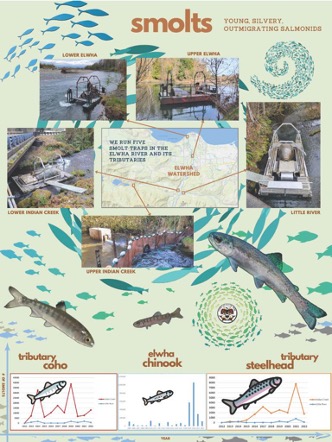
To do so, the Fisheries team also places fence weir traps on Deep Creek, East and West Twin Rivers, as well as Salt Creek. These traps can require up to 20 people in order to carry out the physically demanding work required for installation. Maintaining these traps, in addition to those on the Elwha, among a small team is a coordinated effort that sometimes takes a full day. Additional support from volunteers or department staff other than Fisheries technicians and biologists can be important during peak migration times. Every day, a team of 2-3 will identify and each fish that has been collected overnight before releasing them back into the system below the trap. Once a week, to assess growth rates, lengths and weights are taken on 20 fish of each species and age class.
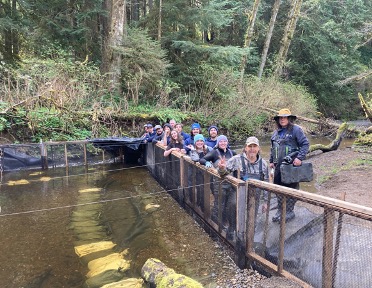
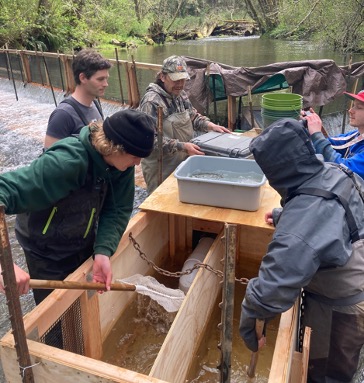
Though exhausting, this extra time in the field is necessary to collect the data that will best inform management and policy decisions, as well as the long-term effectiveness of restoration efforts. But population estimates alone can’t capture the big-picture connections between species or among species and with their environment. One parameter that can help project biologists define these relationships is diet.
In addition to enumerating fish, the Fisheries team also collect samples of what smolts are eating while they are in the lower reaches of the Elwha River. Using a technique called gastric lavage, the stomach contents of a small sample of fish are emptied out by flushing water into their stomach with a tube. The result of this stomach pump will be preserved, analyzed and compared to food that is available to them. The process is not lethal to the fish (just leaves them perhaps a little hungry), but provides critical information to address research questions, such as potential competition between hatchery reared and wild spawned fish that are present in the estuary simultaneously.
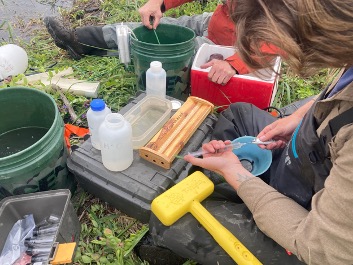
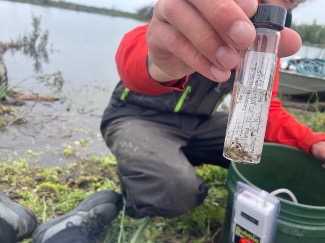
Just before reaching the ocean, smolts linger in the boundary that separates it from their familiar freshwater homes – the estuary. The fluctuating physical and chemical properties of this habitat is reflective of the transitional stage the fish themselves are in, but provides critical food to support their final development as smolts prepare to grow into adult fish. The often turbid waters of estuaries reflect the sediment rich bottom that is home to a diverse array of macroinvertebrates that thrive on the nutrients flowing downstream as well as cycled with ocean tides. These estuarine benthic communities are the foundation of the food chain for juvenile salmonids migrating through, as well as other resident species.
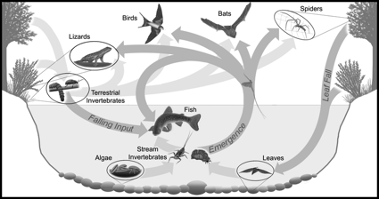
Understanding exactly what food is available in the estuary to these young, growing salmonids is another large project that occurs over three separate weeks during the late spring and summer that also requires many hands and long hours. Up to 25 sediment samples are collected from the Elwha River estuary, returned to the lab and then processed by hand. This effort is less physically demanding than installing smolt traps, but requires great attention to detail. The collection of critters that is picked, sorted and identified will ultimately be compared to the identifiable contents of smolt stomachs collected across the season.
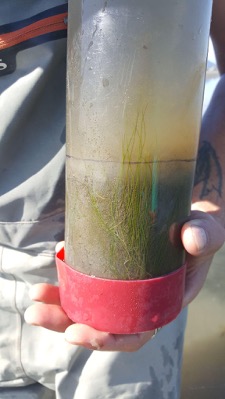
It will take several more seasons of field effort and years of observations to generate a complete picture, but each year sheds light on the next steps toward ecosystem recovery.
“Balance is not a passive resting place—it takes work, balancing the giving and the taking, the raking out and the putting in.” ― Robin Wall Kimmerer, Braiding Sweetgrass
To learn more, visit the LEKT Natural Resources Department Fisheries page. If you are interested in helping the Fisheries team with these monitoring efforts in the future, please complete our Volunteer Interest Form, so that we can add you to our database and connect you with upcoming opportunities.
Written by: Chelsea Behymer, LEKT/ACE Elwha Science Outreach Coordinator
Header Image: Smolts captured in the West Twin River fence weir. courtesy of Mel Elofson

